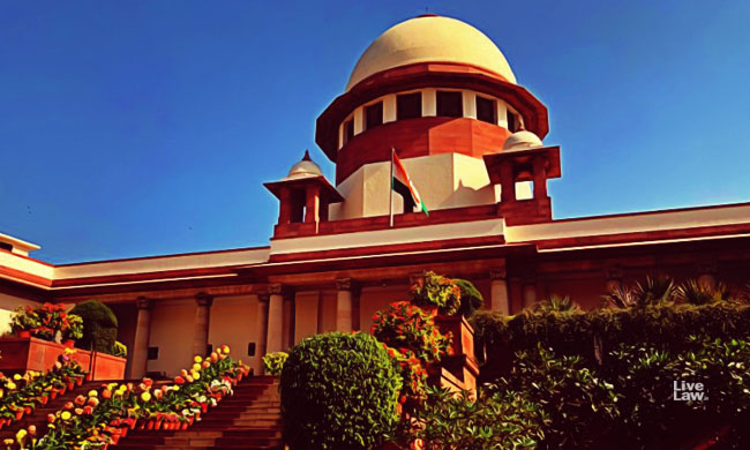Supreme Court: Caught Betwixt Populism And Activism
Abhik Chimni
17 May 2019 12:23 PM IST

The UPA regime saw the Supreme Court become an important part of public discourse. The cancellation of spectrum and coal allocations defined the anti-corruption Campaign. In the run up to the 2014 elections, the Court's orders against the executive were seen as a reflection of its independence. Five years on the Court is struggling to remain credible. On one hand it appears to buckle under the diktas of a majoritarian Government; on the other it looks unsettled with a social media that demands instant access to the Court.
THE POPULIST EXECUTIVE
The Executive today demands that institutions align with the political ideas of the Party in power. Judgements contrary to the views of the Executive are attacked in a manner that seeks to undermine the Court as an institution. The Minister for Finance called the Supreme Court's judgement striking down NJAC the tyranny of the unelected. The Sabrimala judgement upheld the fundamental premise of the Constitution- equality. However the executive portrayed the decision to be against the religious sentiments of Hindus. Orders holding the armed forces accountable for use of excessive force and sexual exploitation of civilians are portrayed as being against national interest.
The Court that during the 2G case insisted that PM Manmohan Singh make his stand clear in Court. Today watches mutely the midnight removal of the CBI Director. It maintains discreet silence while the executive violates the Court's interim orders in Aadhar. And procrastinates as a large bulk of Indian currency is rendered useless overnight.
Most recently, sexual harassment allegations against the CJIwere declared a conspiracy by the Solicitor General of India.Jaitley found such allegations made a mere ploy to disrupt the Judiciary.Within 24 hours representatives of the Government in absence of any process declared the charges false.
The executive has also found every way possible to interfere in the appointment of judges. Let us not forget CJI T.S. Thakur broke down on the issue of appointments. The trend that started with the rejection of senior lawyer Gopal Subramanium and multiple rejections of collegium recommendation's including of Justice K.M. Joseph has continued with the latest rejection of the names sent by the Collegium. The message is clear;if you are not favourably disposed towards the executive you would find it difficult to be appointed.
The Right to Information Act and Public Interest Litigation can be important tools to further civil right and demand accountability of the state. The BJP reaped benefits by using them to focus on corruption of the earlier regime. Today, activists who fought against the UPA from taking part in Anna's campaign to fighting the 2G and Coal cases are labelled institutional disruptors; a threat to the court.
THE PRESS CONFERENCE AND INSTITUTIONAL DISRUPTORS
The Apex Court decides on issues of constitutional values (right to pray equally, right to love, issues of privacy etc) as we saw in Sabrimala, Hadiya,Aadhar etc as also on issues of political corruption (Rafale).In the age of instantaneous access and sharpened ideologicaldivisions,Court decisions face great scrutiny in the media.Additionally post the press conference there is now a culture of public lauding of individual Judges and best owing the mas representing a particular world view. This is dangerous and undermines the role of the judiciary in the public eye.
This is the reason why one sees reputations of judge's swing wildly. CJI Gogoi, a press conference hero, just few months ago,is now mired in controversy overseeing sexual harassment allegations against himself!J. DY. Chandrachud who shared the bench with CJI DipakMisra during his tumultuous tenure and authored the J.Loya judgement was criticised and shortly later hailed for his Aadhar dissent. The same happened with J.Chelameshwar who upheld the Haryana law banning persons without toilets from contesting elections and dissented in NJAC but was hailed when he appeared in the press conference.
The Court is represented by an ideologically heterogeneous set of judges. Whatbinds the individuals and forms the court is the application of the letter of law and procedure. The recent judgement upholding the law regarding reservation in Karnataka includes J. UU Lalit, who faced great ire when he sat on the bench diluting provisions of the SC/ST atrocities act relating to arrest. Judgements are not always a product of political and social ideologies but are only incidental to the finding as existing in law.
However, the executive which dominates the media, has with great glee accepted this battle of perception.They would rather make the Court subject to popular political discourse than allow it to be answerable to the law and processes of the Constitution.
24/7 MEDIA A BOON IN COURT ?
The last five years show that heightened media exposure and an uninformed fetishizing of transparency has not helped the cause of the institution.I do not see how the Courts have become more democratic in the last five years.Courts have been anti-majoritarian prior to the advent of mass media. In the 1970's the election of Indira Gandhi was put in question and the Court also ruled contrary to the socialist consensus of the executive during the Privy purses case.More recently during the UPA the Court struck down Salwa Judum and in several judgements ruled in favour of civil liberties against the state.
This regime has been tragic for the reputation of the Judiciary. Chief Justices are using their administrative powers in a questionable manner. This was seen in the Sexual Harassment charges.This executive has openly abetted this. The Court seems divided from within. It is at its most vulnerable state in decades. The need is to go back a decade and see what gave them credibility. It's time to move away from playing to the gallery whether it's one of activists or populists.
Views are personal


